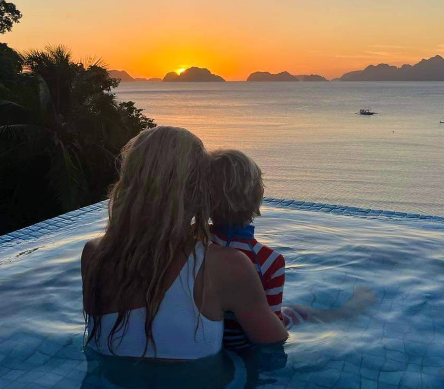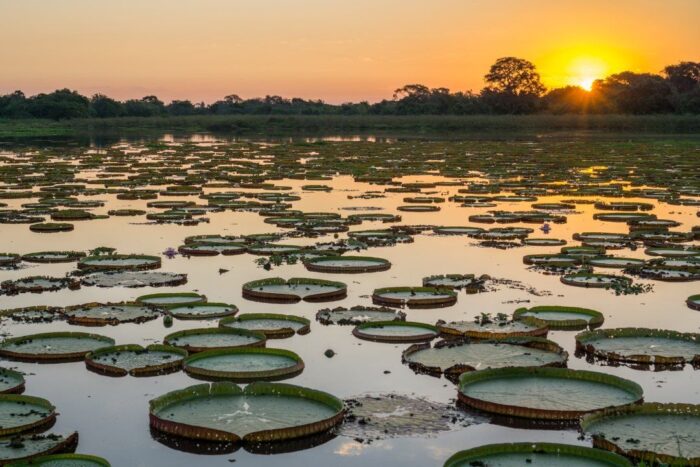The Pantanal is a vast tropical wetland in Brazil that is teeming with wildlife. Spanning over 70,000 square miles, it is the world’s largest tropical wetland area. The best time to visit the Pantanal is during the dry season between May and October when animals congregate around the shrinking watering holes, making them easier to spot. This guide covers everything you need to know when visiting Brazil’s Pantanal.
Table of Contents
Planning Your Pantanal Trip
The first step is determining the best region of the Pantanal to visit based on your interests. The Pantanal is divided into three main areas:
The Southern Pantanal is the most visited and developed area with plenty of lodges and boat tours. It’s best for birdwatchers as there are over 650 bird species spotted here. Top sights are the Paraguay River and vast floodplains teeming with caiman, capybara and birds.
The Northern Pantanal is more remote but best for spotting iconic wildlife like jaguars, giant anteaters, ocelots and giant river otters. The Transpantaneira Highway runs through it with over 128 wooden bridges showcasing wildlife along the way.
The Western Border Pantanal along the Paraguay River is least visited but offers an adventurous experience with nature walks, horseback riding, canoe trips and fishing.
Determine how you want to explore—by boat, jeep safari, horseback, hike—and book a lodge accordingly. Multi-day packages with transportation and tours included are convenient for first-time visitors. The high season is July and August when temperatures are cooler and wildlife viewing is better.
Top Lodges and Accommodations
The Pantanal offers a variety of accommodation from budget pousadas to luxury eco-lodges. When choosing, consider proximity to wildlife viewing spots. Recommended options:
Araras Eco Lodge – Five-star lodge with luxury rooms full of modern comforts while surrounded by nature. Offers boat safaris, treks and bird watching.
Pantanal Jaguar Camp – Specializes in jaguar tracking excursions led by expert guides. Features comfortable tented suites and delicious gourmet meals.
Pousada Alegre – Rustic chic rooms with a pool in the heart of the Transpantaneira Highway, perfect for self-drive adventures.
Pantanal Discovery – Budget-friendly rooms near Paraguay River where you can book boat and fishing trips.
What To Pack
Be prepared for a range of weather conditions:
– Lightweight, light-colored clothing – the heat can be intense
– Raincoat or poncho – afternoon rains are common
– Hiking shoes – for nature walks
– Hat and sunscreen
– Mosquito repellent
– Binoculars – for wildlife viewing
– Camera – to capture those amazing moments
– Neutral-colored clothing – to blend into nature
– Motion sickness tablets – if doing boat rides
Top Wildlife To See
The Pantanal harbors an incredible diversity of plants and animals. Here are the must-see species to spot:
Jaguars – The world’s third largest feline and South America’s largest cat. They love swimming and fish for food.
Capybaras – Giant semi-aquatic rodents that are incredibly social. Spot whole families lounging by water banks.
Caiman – Spectacled and yacare caiman abound in the rivers and ponds. Catch them basking in the sun.
Macaws – Bright blue hyacinth macaws in large flocks flash their vibrant colors.
Toucans – Gigantic toco toucans with bulbous multi-colored beaks perch on treetops.
Parrots – Red-and-green parrots and blue-yellow macaws chatter loudly while feeding.
Tapirs – Large black mammals with prehensile snouts forage for fruit and foliage.
Giant Anteaters – These peculiar looking creatures use their long snouts to feed on ants.
Ocelots – Medium-sized spotted wild cats that hunt small mammals and birds.
Giant Otters – The giant river otter is a highly social species that live in large groups.
Monkeys – Look for the small black howler monkeys that loudly announce their presence.
Iguanas – Bright green iguanas lounge on tree branches along waterways.
Birds – Herons, storks, spoonbills, egrets, ibises and more unique birds.
Things To Do
Boat Tours – Cruise along rivers and flooded plains to find the most wildlife.
Safaris – Join jeep and hiking safaris to spot big game like jaguars.
Fishing – The rivers teem with piranha, pacu and other exotic fish.
Birdwatching – Bring binoculars and cameras to check hundreds of bird species off your lifelist.
Canoeing – Paddle down rivers for an immersive experience with nature.
Horseback Riding – Ride through lush countryside and forests for unique perspectives.
Night Walks – Join guided night hikes using flashlights to spot nocturnal creatures.
Stay in an Eco-lodge – Wake up surrounded only by nature without electricity and WiFi.
Try Local Cuisine – Taste traditional dishes like arroz com pequi and carne seca.
When visiting the Pantanal, be respectful of nature, avoid loud noises, don’t litter and follow all rules. Support eco-tourism to protect this magical paradise teeming with wildlife found nowhere else on Earth. With proper planning, your trip to the Brazilian Pantanal will be an unforgettable adventure exploring one of the wildest and beautiful places in South America. I sincerely hope you find this “A Guide to Visiting Brazil’s Pantanal” article helpful.

Sophie Turner is the adventure travel writer behind AdventureTravelFam.com. With over 10 years of experience in travel writing and a Master’s degree in Tourism Management, Sophie shares her expertise in exploring unique destinations and providing family-friendly travel tips. Follow her adventures on Instagram @adventure_travelfamily.





